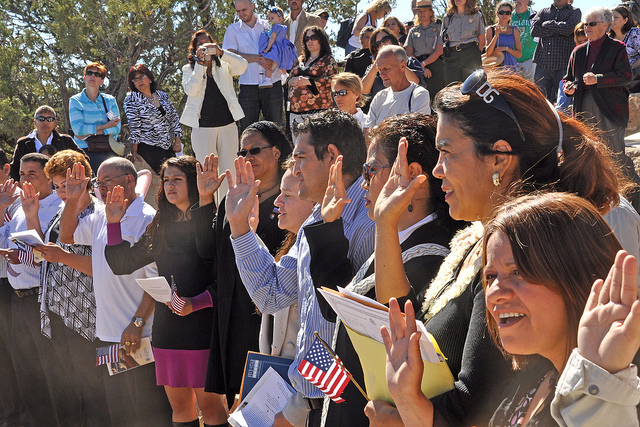In what ways does the process of immigration enable or constrain the transformation and preservation of language and identity? This question is at the heart of an interdisciplinary Matrix Research Team focused on investigating the dynamic interaction between language, identity, and immigration.
"Today we’re witnessing an increased movement of people, their languages, values, ideas and cultural ways of being around the world," the researchers explained in their proposal. "This ever-changing flow brings forth many concerns in regard to the integration of immigrants into their host country and at the same time the preservation of their native heritage. These concerns are closely tied to notions of identity and language."
Led by Maryam Moeini Meybodi, a second year Ph.D. student in the Graduate School of Education, the group is drawing primarily from scholarship in linguistics and anthropology to examine the concept of "translanguaging," typically understood as a transsemiotic system that mediates the interplay between language practices and identity formation in superdiverse contexts.
More broadly, the team will explore the process of identity in migration and translation as an analytic method ubiquitous to social life and everyday practices between people from various linguistic and cultural backgrounds. These discussions will not only be fruitful for academics studying immigration, language, and identity, but may also be of benefit for educators and policymakers.
"We’re not witnessing only a rise in numbers but also a rise in the diversity of the immigrant population," they wrote. "What would this rise in diversity mean for host countries? What would immigration entail for the immigrants? In this process, there definitely exist a tension between integration and preservation. But we beg to ask, assimilation to what? Preservation of what? Culture? Identity? What is language’s role in all these?"
The researchers aim to organize a conference, as well as publish papers and coordinate workshops on this timely and globally significant issue. They noted that the issue is particularly well suited for Social Science Matrix given the interdisciplinary nature of this subject. "An examination of the interplay between language, identity, and immigration would certainly necessitate an interdisciplinary approach, as each notion is in itself grounded in different disciplines/theoretical field," they wrote. "Exploration of these topics will have significant implications for the ways in which different social science disciplines address issues pertaining to immigration.
Ultimately this team's work has potential to influence the processes by which immigrants around the world assimilate into new cultures—and how they are perceived and accepted by those around them. "Placing language at the center stage of the immigration process and examining its relation to identity will shed light into how issues of integration and preservation could be discussed in a way that would promote cross-cultural understanding," they wrote. "Bringing forth such discussions will foster greater cross-cultural understanding between the immigrant population and their host countries."
Image Credit: Creative Commons via Flickr, "Naturalization Ceremony, Grand Canyon," Grand Canyon National Park
